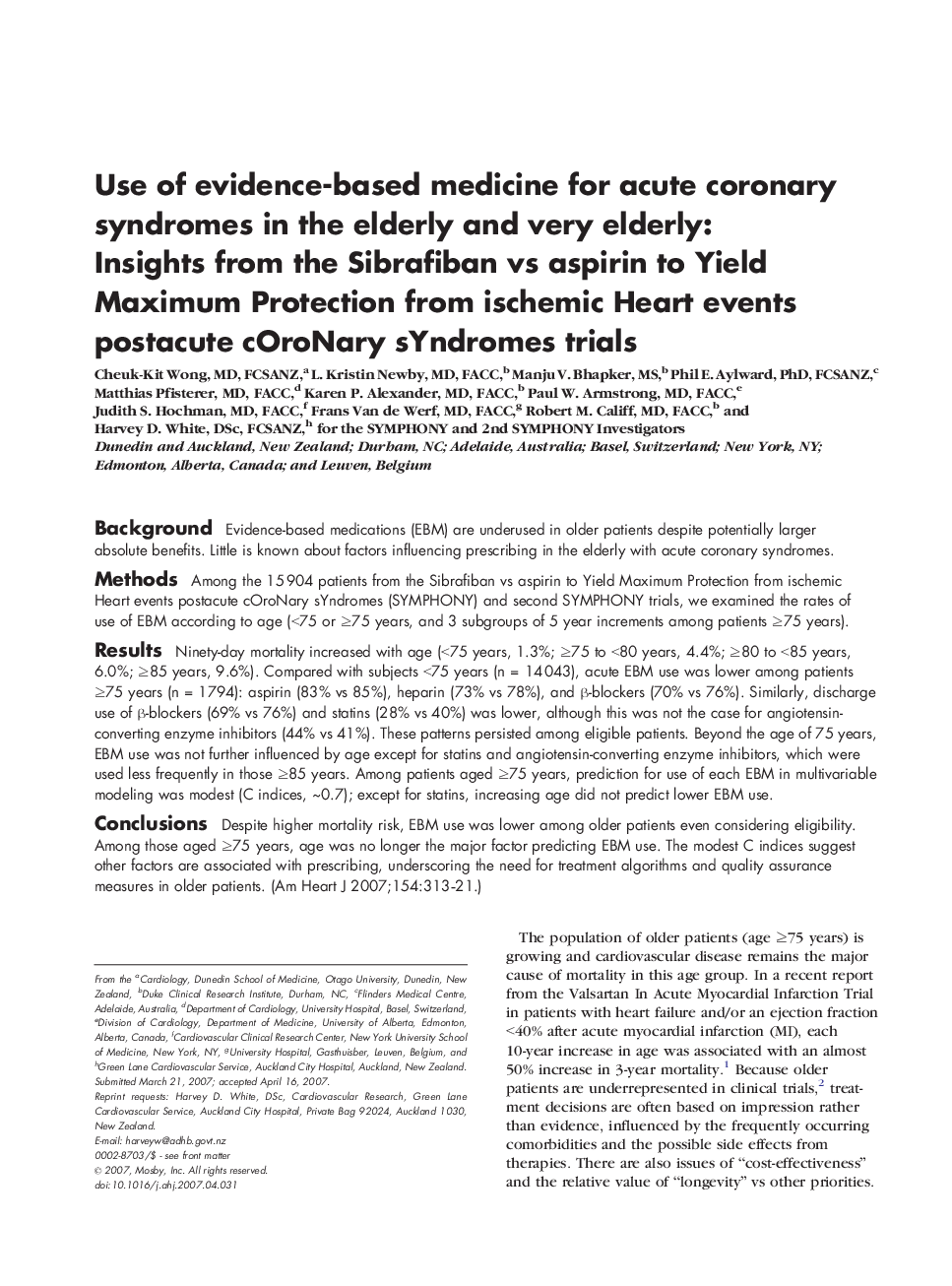| کد مقاله | کد نشریه | سال انتشار | مقاله انگلیسی | نسخه تمام متن |
|---|---|---|---|---|
| 2851540 | 1167853 | 2007 | 9 صفحه PDF | دانلود رایگان |

BackgroundEvidence-based medications (EBM) are underused in older patients despite potentially larger absolute benefits. Little is known about factors influencing prescribing in the elderly with acute coronary syndromes.MethodsAmong the 15 904 patients from the Sibrafiban vs aspirin to Yield Maximum Protection from ischemic Heart events postacute cOroNary sYndromes (SYMPHONY) and second SYMPHONY trials, we examined the rates of use of EBM according to age (<75 or ≥ 75 years, and 3 subgroups of 5 year increments among patients ≥75 years).ResultsNinety-day mortality increased with age (<75 years, 1.3%; ≥75 to <80 years, 4.4%; ≥80 to <85 years, 6.0%; ≥85 years, 9.6%). Compared with subjects <75 years (n = 14 043), acute EBM use was lower among patients ≥75 years (n = 1794): aspirin (83% vs 85%), heparin (73% vs 78%), and β-blockers (70% vs 76%). Similarly, discharge use of β-blockers (69% vs 76%) and statins (28% vs 40%) was lower, although this was not the case for angiotensin-converting enzyme inhibitors (44% vs 41%). These patterns persisted among eligible patients. Beyond the age of 75 years, EBM use was not further influenced by age except for statins and angiotensin-converting enzyme inhibitors, which were used less frequently in those ≥85 years. Among patients aged ≥75 years, prediction for use of each EBM in multivariable modeling was modest (C indices, ~0.7); except for statins, increasing age did not predict lower EBM use.ConclusionsDespite higher mortality risk, EBM use was lower among older patients even considering eligibility. Among those aged ≥75 years, age was no longer the major factor predicting EBM use. The modest C indices suggest other factors are associated with prescribing, underscoring the need for treatment algorithms and quality assurance measures in older patients.
Journal: American Heart Journal - Volume 154, Issue 2, August 2007, Pages 313–321